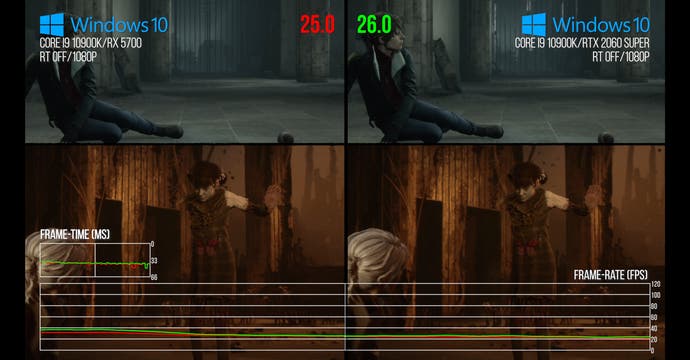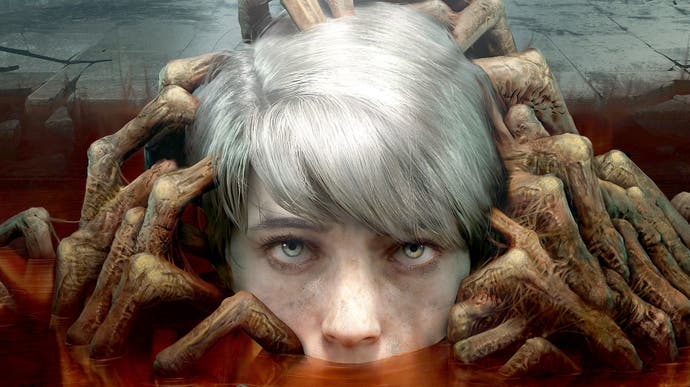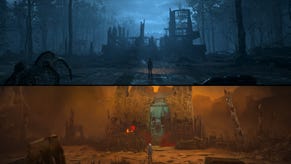The Medium pushes PC hard - and even 1080p60 is off the table for high-end rigs
So how come it runs OK on consoles?
After spending some time with The Medium on Xbox Series consoles, we were eager to try out the game on PC. It's an impressive title that at once pays homage to the survival horror titles of years gone by, while at the same time delivering some impressive - and technologically ambitious - new features. Bloober's dual viewport rendering concept clearly presents a huge challenge to the graphics capabilities of Microsoft's next-gen consoles, with even the mighty Series X employing dynamic resolution scaling that could see the title dip beneath a native 1080p - so how does the PC version deal with this and what are the extra features delivered to those with more powerful hardware? And to address the point raised by many PC users who've played the game - is it really 'unoptimised'? And if performance is poor, can Nvidia's remarkable DLSS AI upscaling technology turn it around?
In point of fact, Bloober employs both DXR-based hardware-accelerated ray tracing in The Medium and Nvidia DLSS comes along for the ride, principally in off-setting the additional cost in utilising RT features. But DLSS also improves upon native resolution image quality. In fact, in scenes we tested comparing Xbox Series X running at a higher native pixel-count to DLSS on PC, Nvidia's AI upscaling managed to deliver palpably cleaner results. As an interesting side-not, The Medium is based on Unreal Engine 4, and so therefore it's using its own temporal-based upscaling solution. It's one of the best around, but DLSS is still delivering a significantly improved image, even in its performance mode, where a 4K image is reconstructed from native 1080p resolution.
After image quality, there's the implementation of RT reflections, where Xbox renders these at a quarter of the current native resolution (remember that The Medium uses dynamic resolution scaling, with a very wide 900p to 2160p range). If there's one criticism I have of the RT features on PC, it's that there's very little granularity in the settings - so reflections always render out at full resolution: a hefty 4x increase in resolution. Bloober also uses a console-specific form of RT reflections by biasing reflections to be more mirror-like, making them cheaper to render. This feature can be enabled on PC, it is a part of UE4, but you'll need to use Unreal Engine Console Unlocker to access it. These are features available, easily tweakable, but I feel that the graphics menu option should open up these settings to the end user.
The PC version also has other RT advantages in that some features are simply disabled on the console versions altogether - like translucency reflections on objects made of glass or clear plastic. It's an expensive feature, it's nice to have it, and it sure looks good - but I can definitely understand why it may not have made its way to the Series X version. On an RTX 3090 - the fastest GPU money can buy - in one scene, turning off translucency reflections results at 4K DLSS performance mode saw frame-rates rise from 33fps to 76fps. And remember that in this scenario, actual internal resolution before the DLSS upscale will be native 1080p. Beyond RT, The Medium on PC looks similar to Xbox Series X, but there are other smaller changes as well, such as how the console version looks to be running with the medium setting for shadow quality, and a lower fidelity rendition of depth of field.
So at this point, despite leaning into DLSS and rendering from a native 1080p up to 4K on an RTX 3090, running this game fully tapped out at a consistent 60fps is not possible, so extrapolating that down to less powerful hardware - and especially to GPUs without DLSS - suggests a grim picture. Some might suggest that it is sub-optimal in the sense that there are clear performance wins that are possible, we just need granularity in the settings to fully access them - as opposed to digging deep into the 'hacks' like Unreal Engine Unlocker. But what really hammers performance on the PC side is the double whammy of the dual viewpoint presentation, along with the fact that there is no dynamic resolution scaler available. It's pretty clear that radical shifts in resolution can stabilise performance in dual view scenes, because we've seen it on consoles. Frame-pacing issues aside, The Medium not only runs at 30fps on Series X, it manages to do likewise on Series S too. Not having this feature on PC is highly problematic.
Running with RT settings at max in dual view areas makes sustaining 60fps in 4K DLSS Performance mode essentially impossible on an RTX 3090 and can even have issues dipping beneath 30fps too. Dropping down from ultra RT sees 60fps become much more viable, but even without RT active at all, the dual viewpoint scenes can still drop beneath 60fps. Then there's the fact that the game has a stuttering problem in general that is attached to a lot of in-game actions, like the changing of camera angles or entering a new view. These will affect any and every PC out there from my testing - so 60fps is nominally possible, but only if you ignore frequent sporadic stuttering. I ended up capping at 30fps for a consistent experience, but the issue here is that the internal 30fps option has improper frame-pacing, meaning more stutter. You can improve matters by using Nvidia's half-rate adaptive v-sync, but even this has issues - something I've never seen from this feature before.
And even beyond that, there seem to be further stuttering issues as camera animation and character animations themselves seem to suffer from irregular movement intervals. So even if you can tweak the game up to 60fps, or get a perfectly consistent 30fps, the game will always present with stutter no matter what, seemingly because of how characters and camera update. All told then, The Medium requires a lot of work. Issues like this need to be resolved and more granularity in ray tracing settings would go a long way for starters. But really, it's the omission of dynamic resolution scaling that ensures that no matter what, The Medium is always going to have issues on PC.
Typically, in a Digital Foundry PC piece, we like to offer optimised settings - the best bang for the buck, if you like. However, with The Medium, I'm not sure how helpful this well be. All I can say is that the simple mode for ray tracing should be enabled if you want those features, but beyond that, I don't think any further settings tweaks will help that much. The problem isn't the settings, it's the content, which places massively variable demands on your hardware, making a set recommendation of quality presets impossible to settle upon. To put this into perspective, on an AMD RX 5700 or an Nvidia RTX 2060 Super, you can playing in excess of 100fps at 1080p in a single view section, but then a dual viewport level can kick in, lasting 30 minutes or so, where you'll be lucky to hold 30fps.

All of which leads us to a stark conclusion - that a capped 30fps may well be the best way to get a consistent experience from this title. Not even a variable refresh rate monitor running at a higher frame-rate produces a consistent experience, because to put it simply, the various stuttering issues make this impossible.
So how can the game be improved? First of all, the ray tracing menu is somewhat simplistic and there are some relatively easy performance wins available by tweaking internal parameters. But fundamentally, even with RT completely disabled, it's clear that The Medium is built around dynamic resolution scaling as the enabling technology that allows the dual viewport aspect of the game to actually work with consistent performance - and that's the missing piece of the puzzle on PC. DRS also opens the door to scalability - after all, the game works just fine on Xbox Series S, which in the context of what we're seeing on PC seems like some kind of miracle. But in the here and now, The Medium on PC is difficult to recommend wholeheartedly, because try as we might, we can't get it to run well - and that's a shame, because there is much to commend and to enjoy in this game.











